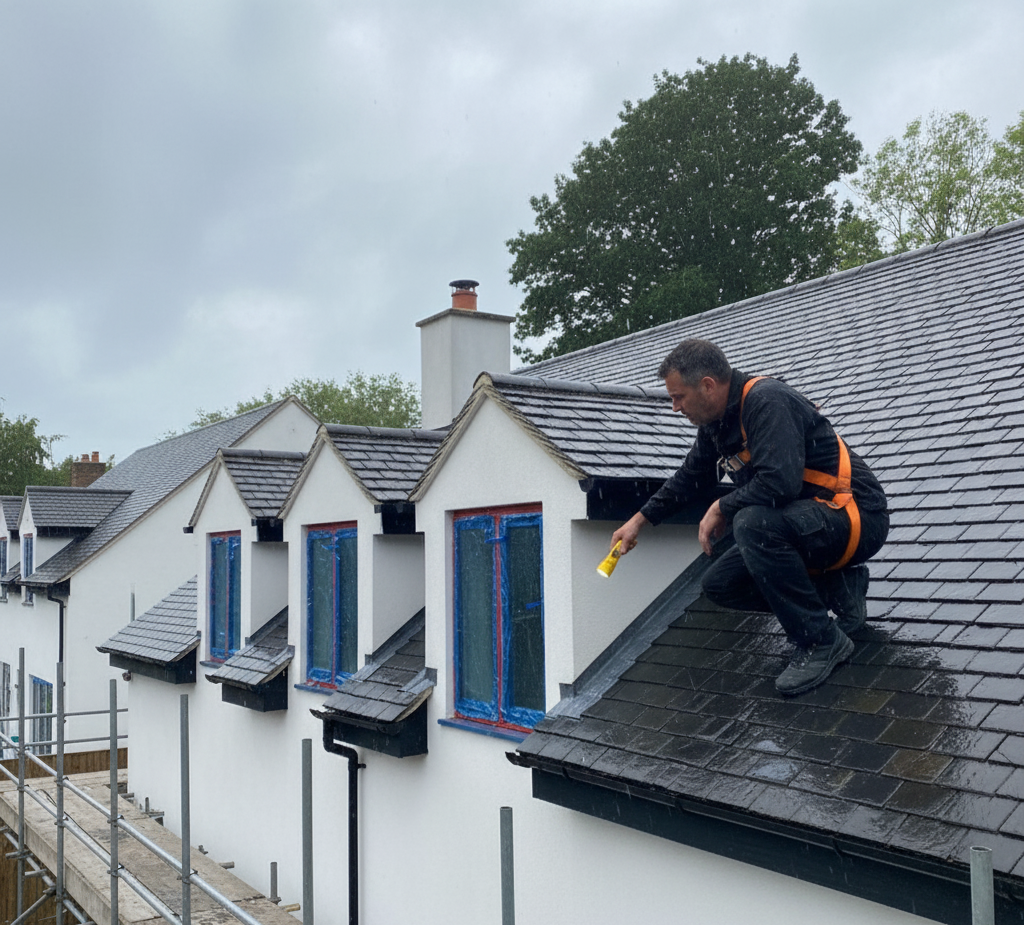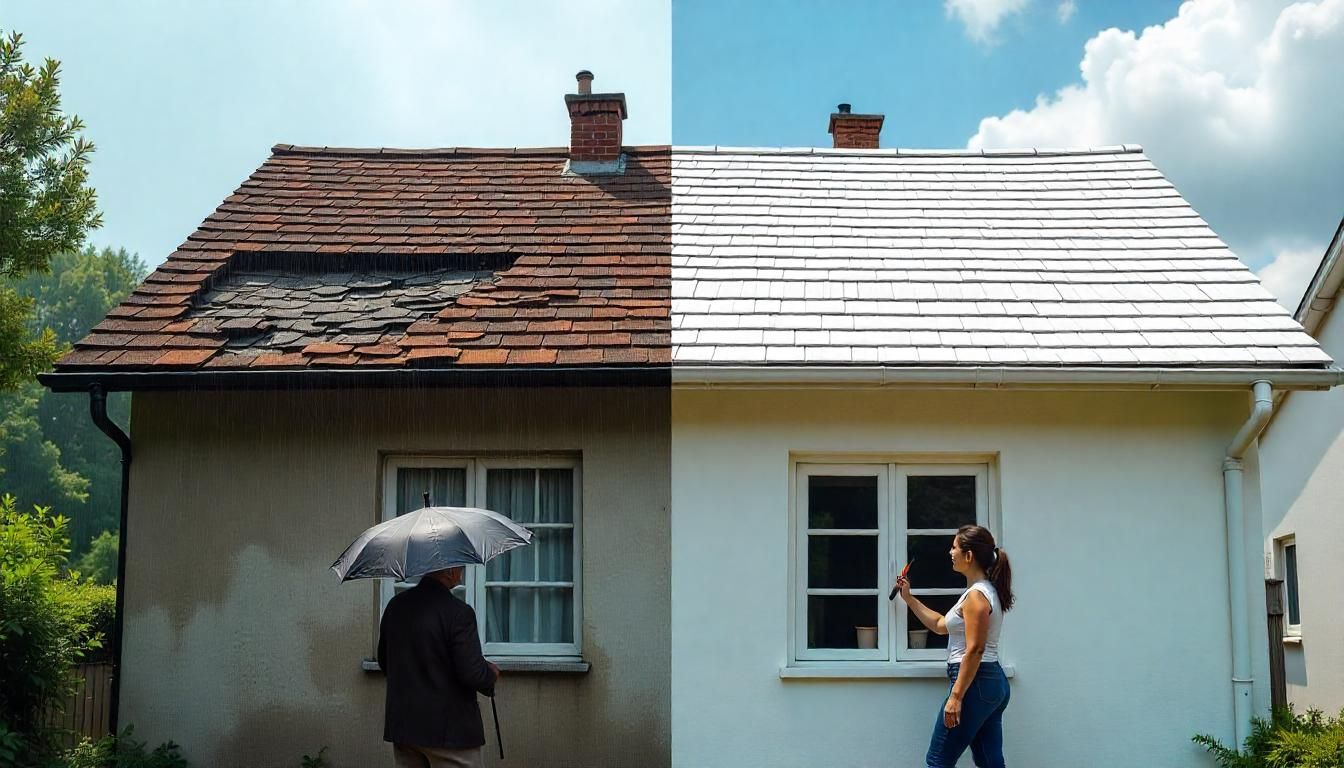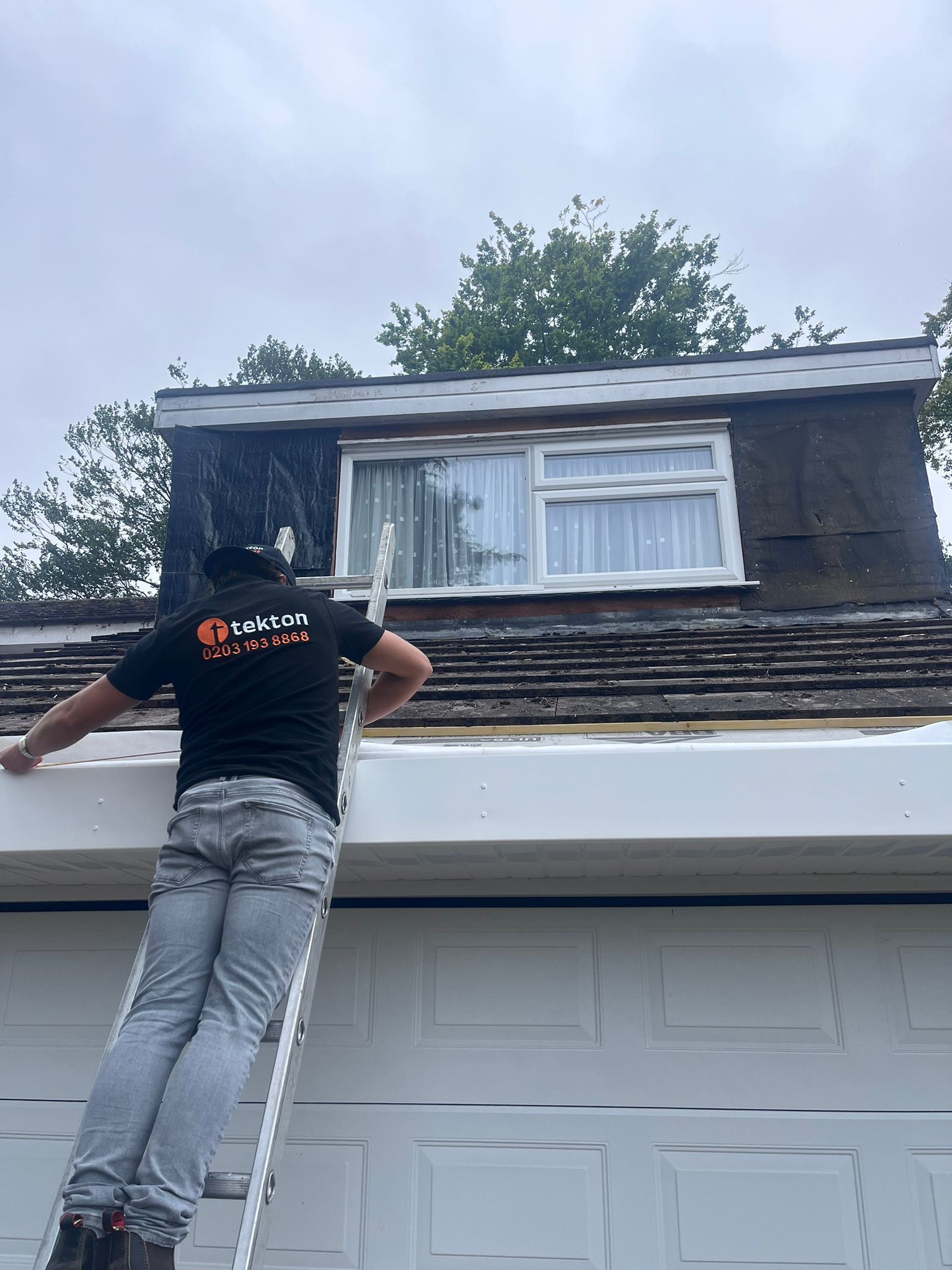How to Deal with Roof Leaks During the Rainy Season
The rainy season can be picturesque, with its pitter-patter sound and green rejuvenation of the outdoors. However, for homeowners, especially in an unpredictable UK climate, it can also signal an impending ordeal—roof leaks. A leaky roof is one of the most common, yet potentially most damaging, problems a home can face in wet weather. The good news is, that with the right approach and proactive care, you can manage leaks effectively and prevent long-term structural or financial impacts.
In this guide, we’ll walk you through the practical steps to identify, manage, and address roof leaks during the rainy season, ensuring your home stays safe and dry.

Why Roof Leaks Demand Immediate Attention
In the UK, where rainfall is often part and parcel of daily life, even minor roof damage can snowball into significant issues. A small leak can quickly escalate into:
- Water damage to ceilings and walls – Stained plaster, peeling paint, or drooping ceilings.
- Electrical risks – Water can seep into wiring or junction boxes, creating the potential for short circuits.
- Insulation saturation – Wet insulation loses its effectiveness and can encourage fungal growth.
- Mould and mildew growth – Both unsightly and harmful to health, particularly for those with asthma or allergies.
- Structural damage – Persistent leaks can weaken timber beams, joists, and trusses.
Addressing leaks swiftly can mitigate escalating repair costs and prevent potential safety risks to your family.
How to Identify a Roof Leak
The sooner you can spot a leak, the easier the fix and the less extensive the damage will be. But finding the source can sometimes be tricky since water doesn't always drip directly below the point of entry. To identify a leak:
1. Inspect Indoors
Start indoors by looking for discolouration, water stains, or bubbling paint on your ceiling or walls. Dark marks may indicate where water has pooled.
2. Examine the Loft
Grab a torch and climb into your loft. Look for wet insulation, dripping water, or damp timber beams. Remember to check the underside of the roof for water trails or gaps.
3. Watch for Exterior Clues
Once the rain has subsided, conduct an exterior check. Look for missing roof tiles, cracked flashing, clogged gutters, or moss build-up. Pay close attention to roof intersections, such as around chimneys or vents, as these are common entry points.
4. Test with a Hose (Weather Permitting)
In dry weather, you can try to replicate the conditions by spraying water onto your roof with a garden hose while someone waits inside to monitor any leaks. This can help locate tricky problems.

How to Handle a Roof Leak During Rain
When your roof starts leaking during heavy rain, it’s vital to act fast. Here are the steps to mitigate immediate damage:
1. Contain the Water
Place buckets, bowls, or a large plastic sheet beneath the leak to catch water. Use old towels to soak up any spills or pooling water.
2. Relieve Pressure
If water starts bulging in your ceiling, it's likely pooling above it. Create a small puncture to release the water gradually and prevent the entire area from collapsing. Use a screwdriver to pierce the centre of the bulge over your bucket.
3. Remove Nearby Items
Get furniture, electronics, and valuable items out of harm’s way. Prolonged exposure to water can cause irreversible damage, and some items, like electrical devices, could create a potential hazard.
4. Isolate the Area if Needed
If water has reached light fixtures or electrical sockets, switch off the electricity as a precaution. Water and electricity can be a dangerous combination, so don’t take risks.
“Even a small roof leak can cause big damage over time — early action and professional repair are key to protecting your home during the rainy season.”
Next Steps Once the Rain Stops
While emergency measures can buy you time, resolving the root cause of the leak is essential to prevent further damage.
1. Call a Professional Roofing Company
Unless you’re experienced and trained in roofing, repairs should always be left to a professional. At Tekton Roofing and Building, we specialise in leak detection and efficient, high-quality repairs tailored to UK homes. We can assess damage, pinpoint issues, and provide long-lasting solutions.
2. Document the Damage
Take photos and videos of the damage for your household insurance claim. Many insurance providers will cover storm-related roof damage, so having detailed evidence can help your case.
3. Clear Debris and Gutters
Check gutters, downpipes, and roof valleys for accumulated leaves and debris. Blockages often trap water, making leaks worse. Ensuring proper drainage can also prevent future issues.
Preventing Roof Leaks in the Future
Rather than waiting for leaks to reveal themselves on a rainy day, you can take proactive measures to protect your home. Here are our top prevention tips:
1. Regular Roof Inspections
Book a professional roof inspection at least once a year—ideally in autumn before winter sets in. These check-ups can identify potential weak spots, like missing or damaged tiles, worn flashing, or compromised waterproofing.
2. Repair Small Issues Promptly
Address minor issues such as cracked tiles or deteriorated mortar as soon as they arise. Left unchecked, small problems can exacerbate quickly in wet weather.
3. Maintain Gutters and Downpipes
Clogged gutters can create water backflow, spilling onto your roof and increasing the risk of leaks. Ensure gutters and downpipes are cleaned regularly, especially during autumn when leaves are prone to build up.
4. Check Your Attic Ventilation
Proper ventilation in the attic or loft can prevent condensation buildup, which can lead to water damage over time. Condensation can mimic the effects of a roof leak even when external damage isn’t present.
5. Trim Overhanging Branches
Trees close to your property can pose a significant risk during storms. Overhanging limbs may rub against the roof, or tiles can be cracked by falling branches, creating entry points for rain.
6. Upgrade Your Roofing Materials
If your roof is approaching the end of its lifespan, upgrading to modern, weather-resistant materials can be a worthwhile investment. Materials such as clay tiles or slate are both durable and widely used in UK properties.
7. Install Waterproof Membranes
Installing a waterproof membrane beneath your roofing material can provide an extra layer of protection for your home, offering peace of mind in heavy downpours.

Why Choose Tekton Roofing and Building
When it comes to roofing in the West London area,
Tekton Roofing and Building is your trusted partner for all things repair and maintenance. Serving local communities, our experienced team understands the unique challenges posed by Britain’s unpredictable weather. We combine skilled craftsmanship with high-quality materials to ensure every roof is watertight and built to last.
We pride ourselves on swift response times, competitive pricing, and transparent communication. Helping homeowners protect their most valuable asset—their home—is our top priority.
Final Thoughts
Roof leaks can be stressful and inconvenient, particularly during the rainy season. The key is understanding how to identify issues early, manage immediate risks, and seek professional assistance to provide permanent solutions. By following preventative measures like regular inspections and gutter maintenance, you can reduce the likelihood of leaks and keep your home safe, secure, and dry.
If you’ve noticed signs of a leak or would like expert advice on preventive roof care,
contact Tekton Roofing and Building today for a consultation.





